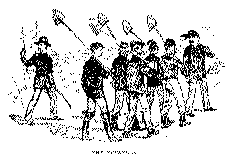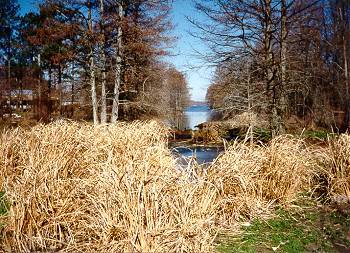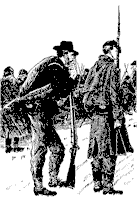
Lake Providence and the Civil War



In 1863, very little stood in the way of the Union's domination of the entire Confederate South. Vicksburg, Mississippi, though, a Confederate stronghold that guarded the Mississippi River, was a major obstacle. The fortification of Vicksburg made it virtually impossible for the Union Army to navigate down the Mississippi River to New Orleans. General Grant and his advisors decided to use the lakes and bayous in the northern area of Louisiana to bypass Vicksburg.
It was an extensive undertaking. The waterways would have to be connected with miles and miles of man-made canals deep enough for boats to travel. One such canal was constructed in Lake Providence, known as Grant's Canal.
The 95th Illinois Regiment arrived in Lake Providence February
2, 1863, to begin digging the canal that would connect the Mississippi River to bayous that would eventually
flow into the Red River and into smaller rivers. The 17th Army Corp from
Memphis made the trip south to help the 95th. The soldiers lived in
relative comfort. They spent their time playing baseball, horseshoes,
swimming and fishing in beautiful Lake Providence. Most of the actual
digging was done by African American men from the area that were rounded up by
the soldiers.
canal that would connect the Mississippi River to bayous that would eventually
flow into the Red River and into smaller rivers. The 17th Army Corp from
Memphis made the trip south to help the 95th. The soldiers lived in
relative comfort. They spent their time playing baseball, horseshoes,
swimming and fishing in beautiful Lake Providence. Most of the actual
digging was done by African American men from the area that were rounded up by
the soldiers.
Grant's Canal in Lake Providence was 100 feet wide, 5 feet deep, and 1 mile long. Grant soon realized the level of the river would decrease with the summer heat and abandoned the project in April 1863. Today, the canal is less than 1000 feet long. Most of the canal, which runs parallel to main street has been filled in. U.S. Senator Russell Long introduced the bill in 1953 that asked for the federal government to fill it in. It is currently in the state pictured below, grassy and prone to filling with litter. Steps have been taken to revitalize the area with the construction of the Grant's Canal Park, which features a beautiful 600 foot long pier that lends a view of the lake and what is left of the canal.


The Civil War visited the Lake Providence area on
several fronts. Carroll Parish (which was ultimately divided into East and West Carroll Parishes) raised 12 companies to
fight for the Confederacy. Battles were fought at Milliken's Bend and
Bunch's Bend, among others. Certain areas of land along the Bayou Macon
were fortified with skirmishes taking place along the Bayou, many involving
African American soldiers. Lake Providence served as the staging area for
the siege of Vicksburg and was host to General Grant and nearly 70 thousand of
his men. After the men were finished basking in the sun on the shores of
Lake Providence, they proceeded to destroy the town and plantations on the
outskirts as they marched south. The town of Lake Providence was laid out
and rebuilt behind the levee during Reconstruction in 1866.
ultimately divided into East and West Carroll Parishes) raised 12 companies to
fight for the Confederacy. Battles were fought at Milliken's Bend and
Bunch's Bend, among others. Certain areas of land along the Bayou Macon
were fortified with skirmishes taking place along the Bayou, many involving
African American soldiers. Lake Providence served as the staging area for
the siege of Vicksburg and was host to General Grant and nearly 70 thousand of
his men. After the men were finished basking in the sun on the shores of
Lake Providence, they proceeded to destroy the town and plantations on the
outskirts as they marched south. The town of Lake Providence was laid out
and rebuilt behind the levee during Reconstruction in 1866.

One of the oldest houses in Lake Providence played an important role in the Civil War. Arlington, which is on the north shore of the lake, was built in 1841 as a single story building. In 1852, a new owner elevated the floor and built a second floor underneath. The house is famous for serving as the headquarters of many Union Generals, including U.S. Grant. This is possibly the only reason that the house was spared from the destruction that the rest of the town suffered at the hands of the Union Army. Today, Arlington is a privately owned home steeped in southern beauty. The front of the house actually faces the lake instead of the road and can be seen from the highway across the lake.
|
Arlington Today |
An Artist Sketch |
Links:
Vicksburg National Military Park
http://tennessee-scv.org/Camp1513/